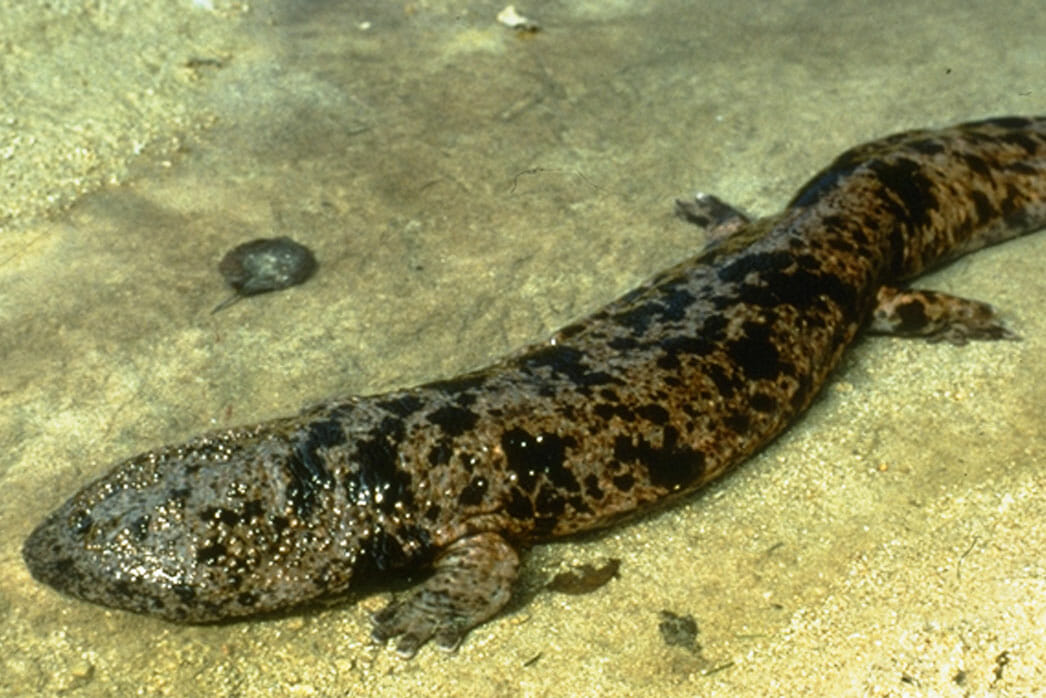Japanese giant salamander
Andrias japonicus
At the Detroit Zoo
Five Japanese giant salamanders – three males (Bob, Dieter and Sven) and two females (Hetsu and Helga) – arrived in 1999 from Japan’s Asa Zoo where they were captive bred from wild-caught parents. They can be seen at the award-winning National Amphibian Conservation Center – a leader in amphibian conservation and research – which houses a spectacular diversity of frogs, toads, salamanders, newts and caecilians. Their expansive habitat features a waterfall, caves, live plants, and a stream.
Description
Japanese giant salamanders are the second largest salamanders in the world; they can reach more than four feet long and weigh up to 88 pounds. Their skin is a mixture of gray, black and white, and is heavily wrinkled. This species has an elongated body, a long broad tail and two pairs of legs that are similar in size. Their eyes are small and positioned on top of their broad, flat heads.
Fun Facts
-
Due to them having small eyes, Japanese giant salamanders rely on their other senses to hunt.
-
Japanese giant salamanders can go weeks without eating, if necessary.






